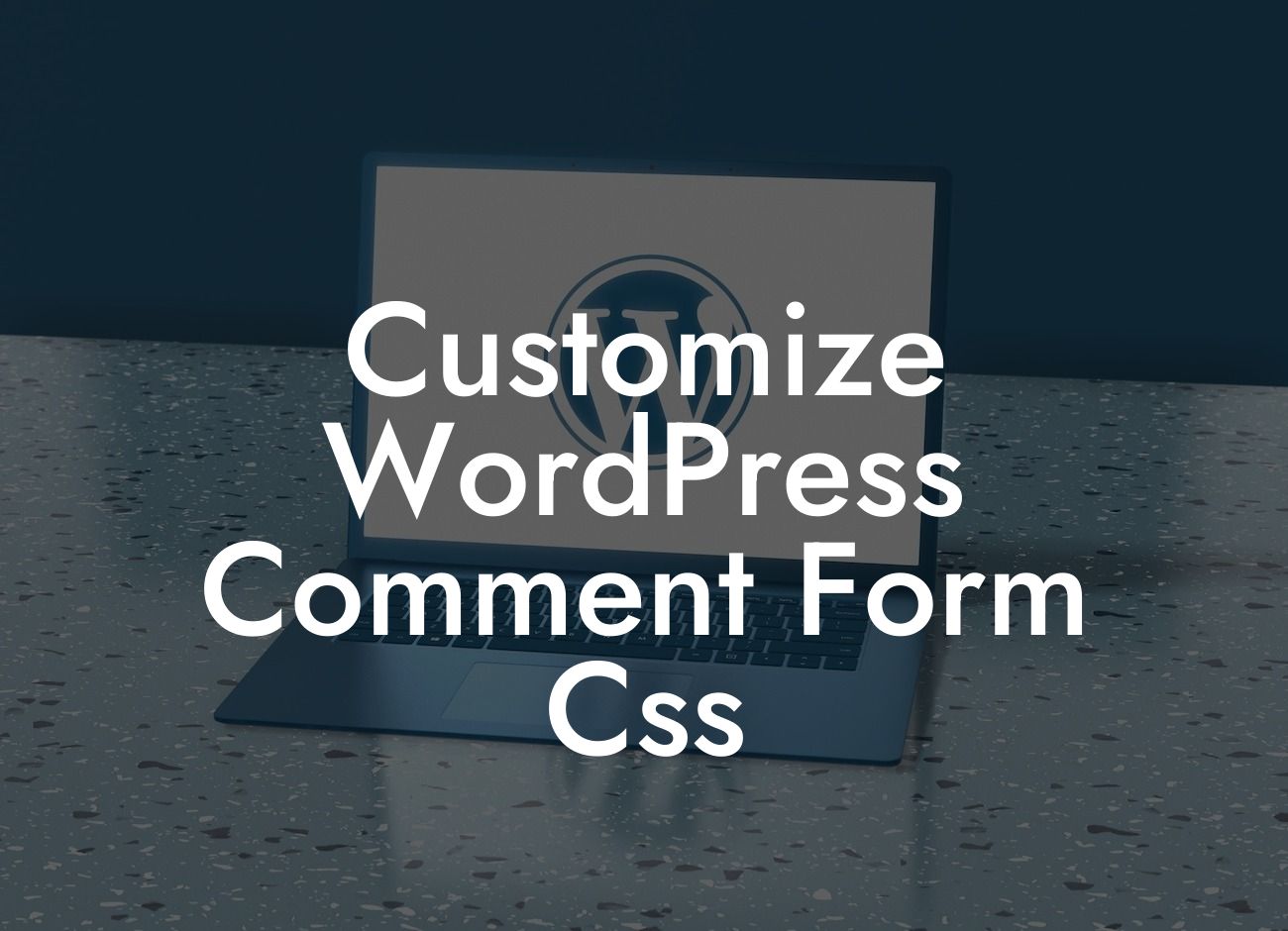Do you want to enhance your website's user experience and add a personalized touch to your WordPress comment form? If so, you've come to the right place! In this article, we will guide you through the process of customizing the WordPress comment form CSS. Whether you're a small business owner or an entrepreneur looking to supercharge your online presence, DamnWoo's expert tips and step-by-step instructions will help you achieve extraordinary results. Let's dive in!
Customizing the WordPress comment form CSS can make a significant difference in the overall look and feel of your website. With just a few tweaks, you can transform the default comment form into a visually appealing and engaging element. Here's how you can do it:
1. Understanding the HTML Structure:
To customize the comment form CSS, it's essential to understand its HTML structure. Each element in the comment form has a specific class or ID associated with it. By targeting these elements, you can style them according to your preferences.
- The comment form itself has the class ".comment-form."
Looking For a Custom QuickBook Integration?
- The comment text area can be targeted using the class ".comment-form-comment."
- The submit button has the class ".comment-form-submit."
2. Using Custom CSS:
Once you've identified the relevant classes or IDs, it's time to use custom CSS to style the comment form. You can either add the CSS code directly into your theme's style.css file or use a custom CSS plugin.
- To change the font style and color of the comment text area, you can use CSS properties like "font-family" and "color."
- Adjusting the padding and border properties can help modify the spacing and border of the comment text area.
- Adding background colors or images to specific elements of the comment form can give it a unique look.
- You can also style the submit button by changing its text color, background color, and border properties.
3. Optimizing for Responsiveness:
In today's mobile-driven world, it's crucial to ensure that your customized comment form CSS looks great on all devices. To make your comment form responsive, consider using media queries to adjust the styling based on different screen sizes.
Customize Wordpress Comment Form Css Example:
Let's take a realistic example to illustrate the impact of customizing the WordPress comment form CSS. Imagine you run an e-commerce website selling handmade products. By customizing the comment form CSS, you can create a comment section that complements your brand's aesthetic. You can change the font to match your website's typography, add a subtle background image that reflects your niche, and adjust the color scheme to align with your brand identity. This customization not only enhances the user experience but also strengthens your brand presence.
Congratulations! You've now learned how to customize the WordPress comment form CSS to elevate your website's appeal. Don't stop here - explore more guides and resources on DamnWoo to optimize your online presence. And why not try one of our awesome WordPress plugins specifically designed for small businesses and entrepreneurs? Share this article with your peers and spread the knowledge. Stay tuned for more exciting content coming your way from DamnWoo!













